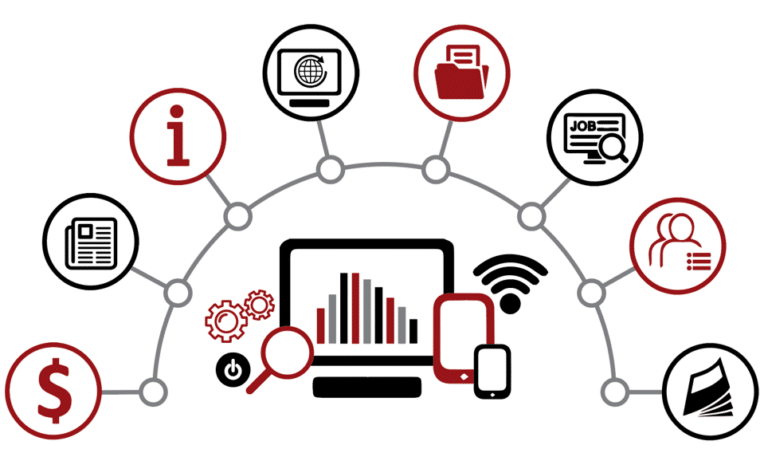Part Three of RAMP UP: A Competitive Intelligence Framework for Strategic Advantage
- Competing Products – Best Practices for Analysis and Action Starts with RIVALS
- Customer Insights That Drive Strategy: AVENUES Leads to Results
- Market Trends Analysis: A Proven Method to Outpace Competitors
- Growth Strategy: How to Convert Potential into Performance
- Strategic Planning Process: How to Build Alignment Across Teams
How do you stay ahead of change? This question challenges executives, strategists, marketers, and product owners every day. Fortunately, you don’t need to predict the future. You need to recognize market shifts and respond faster than your competitors.
RAMP UP is Sedulo’s proprietary research and strategic analysis framework. It brings structure, discipline, and clarity to conducting competitor, customer, and market research. RAMP UP is a system for transforming raw data into actionable strategy through a collaborative workshop that aligns stakeholders and accelerates decision-making. RAMP UP is built to answer a critical question: How can organizations make faster, smarter, and more aligned strategic decisions when change is constant and accelerating?
M – Market Shifts emphasizes how companies can standardize market research to more effectively monitor and predict changes. “Market research” here means more than just surveys or static reports; it involves a continuous effort to identify signals of movement. That includes:
- The methods used
- The information uncovered
- Turning information into action
- How to operationalize this in your own business
Consider this real-world example: a few years ago, a rising consumer electronics brand hired Sedulo after two quarters of declining sales. The product was well-reviewed and widely available. Despite increased marketing spend, sales remained flat. Internal teams blamed external forces—seasonality, the economy, and distribution. But the market trends analysis told a different story. The category had shifted. While the company focused on individual smart gadgets, the market had moved toward ecosystems. Google, Amazon, and Apple have changed the game. Buyers now expect seamless integration, not standalone devices.
The change happened quietly—a subtle pivot in expectations. By the time the company realized it, the market had moved on, and their investment in the new product was sunk. This is what makes market shifts so dangerous: they unfold quietly, but leave a lasting impact.
This is where RAMP UP’s Market Trends Analysis proves its value.
Market Shifts: What Are They?
A market shift is not a seasonal trend or temporary spike. It’s a structural change in how companies compete and win. These shifts can come from:
- New customer expectations
- Competitor disruption
- Regulatory pressure
- Supply chain realignment
- Emerging technologies
When a shift occurs, the questions must change:
- Who is the real buyer now?
- What do they value?
- What expectations define the category today?
Those who answer first gain the advantage. That requires more than tracking lagging indicators. You need to uncover anomalies, friction points, and emerging behaviors early, then take action. That action may take the form of pilots, experiments, or new positioning that enables you to lead the shift instead of chasing it.
Market Trends Analysis: Key Steps
Adequate market understanding begins with two questions:
- What is changing?
- How should we respond?
To answer, RAMP UP applies two foundational methods:
Sizing and Segmentation: Understanding the Structure
Before identifying change, you need a clear view of what exists today. Every project starts with a challenge: “What do you believe about your market, and when did you last test it?” This involves examining:
- Size: Is the market growing or shrinking?
- Segmentation: How is it structured—by buyer type, geography, or use case? Who leads and who lags?
- Headroom: Where does opportunity remain? Are constraints behavioral, technical, or financial?
- Movement: Are new players entering or existing ones exiting? Is supplier activity shifting?
Establishing this baseline reveals the structure, power dynamics, and opportunity zones within your market.
Trend Analysis: Interpreting Movement
Next comes understanding how the environment is changing. Sedulo analyzes shifts through four key lenses:
- Thought Leadership: What topics are dominating reports and conversations?
- Dynamics: What’s accelerating market expectations or product adoption?
- Complexity: Are buyers demanding simpler or more tailored solutions?
- Hostility: Is the landscape becoming more fragmented or more consolidated?
This approach reveals early signs of disruption before headlines or quarterly reports catch up.
What Types of Trend Information Is Uncovered?
Market trends analysis requires two streams of input:
1. Market Analysis Through Primary Research
Primary research involves direct engagement with knowledgeable individuals, such as former employees and customers, to gather in-depth, accurate, and strategic insights. Trained resources ensure that ethical and legal interviewing practices are followed to prevent the disclosure of confidential information. Consider interviewing sources, including:
- Current customers to capture evolving needs
- Former customers need to understand churn
- Partners and sellers to reveal friction
- Non-converters to expose positioning gaps
- Subject Matter Experts to interpret the broader context
These conversations highlight:
- Shifting language and expectations
- New buying criteria
- Emerging friction in the customer journey

2. Collecting Data Through Secondary Research
Desk research provides early indicators of category movement. Monitor your target market for historical trends, economic trends from sources like:
- Analyst reports
- industry publications
- Press releases and product updates
- Earnings calls
- Competitor job postings
- Forum and social chatter
This approach identifies:
- Where competitors are investing
- Which trends are gaining traction
- What adjacent markets may be forming

RAMP UP users should also mine and explore internal data, because CRM, support ticket, and campaign anomalies often reveal early warning signs that external data may miss. By integrating primary, secondary, and internal inputs, you surface insights that others miss, then translate them into action.
The Four I’s: From Market Information to Strategy & Action
- Information: Gather raw data from varied sources
- Intelligence: Connect data to identify meaningful patterns
- Insights: Ask, “What does this mean for us?”
- Implications: Define what actions this insight demands
This model turns scattered findings into strategic action plans.

How to Build a Market Trends Analysis Capability
- Assemble a Cross-Functional Coalition: Bring together leaders from strategy, product, marketing, sales, and CX. Align on key market questions, share internal data, and champion the use of insights.
- Create a Market Baseline: Start with secondary research to size and segment. Then validate with customer interviews, surveys, and internal performance data.
- Launch a Trend Analysis Workflow: Whether through internal staff or a partner like Sedulo, create a consistent program to gather and interpret market signals using primary, secondary, and internal data streams.
- Apply the Four I’s: Use the framework to analyze findings and prioritize decisions.
- Communicate Insights with Clarity: Deliver regular briefings, visual dashboards, and tailored updates that speak to product, sales, and executive teams. Always include the “so what” and “now what.”
- Invest in Systems: Use tools like SharePoint or Notion to store and tag insights—Automate inputs via APIs and alerts. Standardize formats to reduce friction and accelerate action.
Why Market Trends Analysis Matters
Clarity: You gain a shared, evidence-based understanding of how your market is structured and evolving.
Readiness: Your team can spot and respond to change before it becomes a disruption.
Agility: With strong signals and clear implications, you move faster and smarter than slower competitors.
What Market Shift Delivers
Investing in market trends analysis delivers a strategic advantage. It ensures your decisions align with what’s happening now, not what happened last year.
- Change happens faster than most teams expect.
- Product-market fit is fluid, not fixed.
- Baselines provide a benchmark against which to measure.
- Market research is an ongoing capability, not a one-time report.
With the right signals and structures in place, you don’t need a crystal ball. You need the correct data and insights to drive action.
How Market Shift Data Varies by Industry
Different industries have separate requirements for analyzing industry trends, targeting specific market segments, and monitoring the competitive landscape and economic indicators.
Market Trend Analysis in Technology
Shifts often stem from how people evaluate and adopt tools, not just new features.
A project management SaaS provider discovered that self-serve users were adopting their product faster than enterprise buyers. As a result, they restructured their onboarding, messaging, and pricing to focus on product-led growth, resulting in a 40 percent increase in conversions.
Market Trend Analysis in Consumer Goods
Culture drives behavior faster than scanned data.
A beverage client discovered that customers were cutting sugar themselves. Market trend analysis validated the insight, prompting the launch of a low-sugar product line.
Market Trend Analysis in Retail
A Fortune 500 retailer faced disruption from emerging social commerce dynamics. Market insights enabled the client to pivot marketing tactics, test new channel mixes, and safeguard revenue against shifting buyer expectations.
Market Trend Analysis in Manufacturing
Policy often reshapes demand.
Market Trend Analysis in Professional Services
Shifts come from format, not expertise.
Master Market Shifts for Strategic Advantage
Markets evolve. Buyers shift expectations. New competitors emerge. These changes rarely announce themselves—they first appear as weak signals, outlier behaviors, and quiet movements. RAMP UP’s Market Shifts lets you turn that noise into clarity with effective market trend analysis techniques.
By establishing a structured, ongoing capability to size markets, monitor shifts, and align teams around what’s changing, companies build real strategic advantage. You stop guessing. You start acting early, before competitors catch up.
This isn’t a quarterly task or a one-time report. It’s a continuous discipline that sharpens decision-making, improves forecasting, and positions your organization to lead, not follow.

